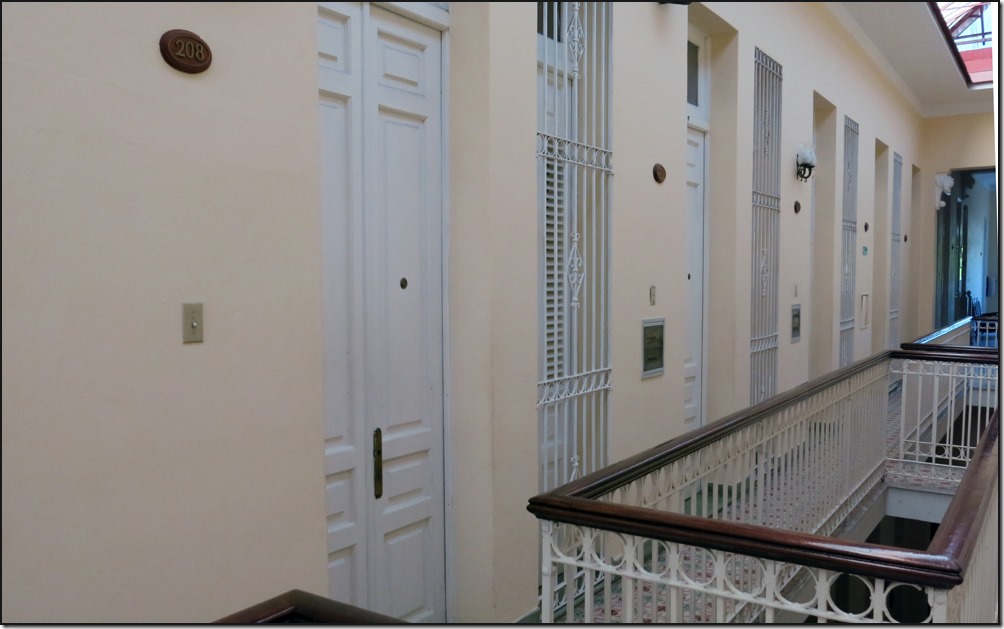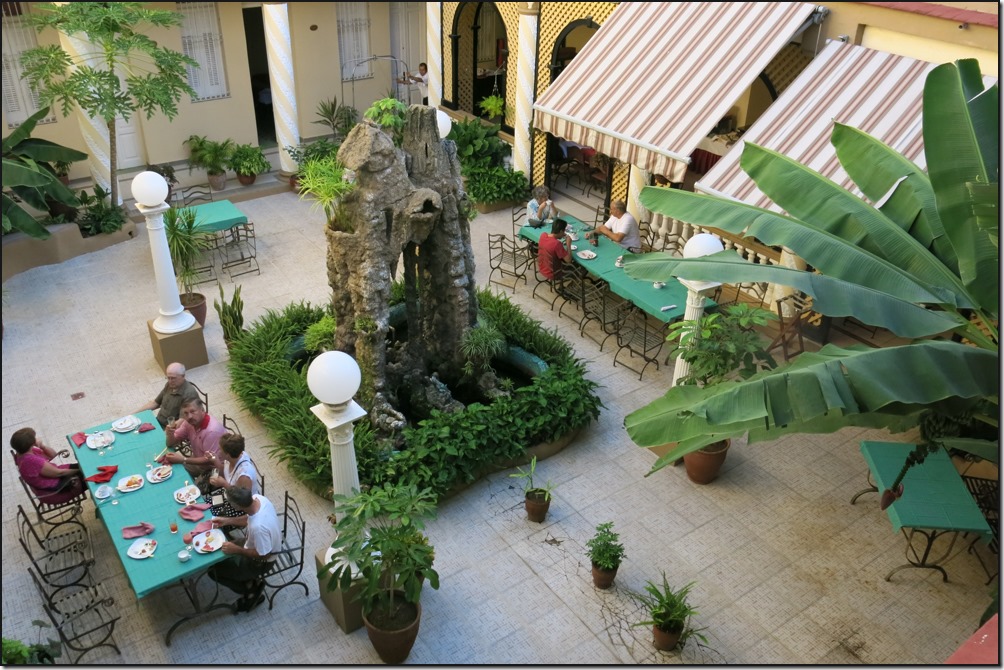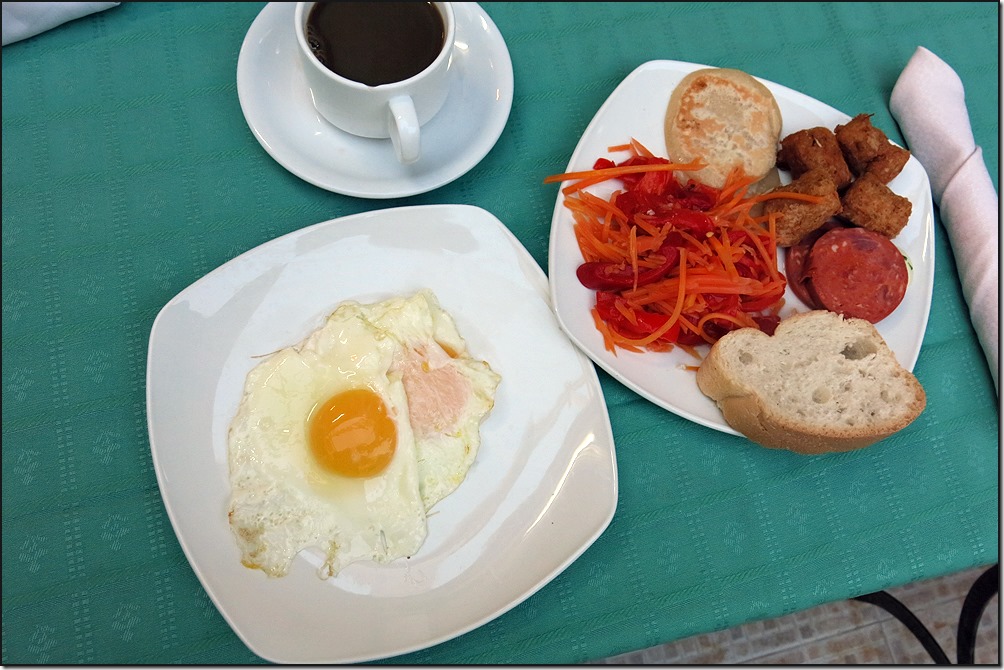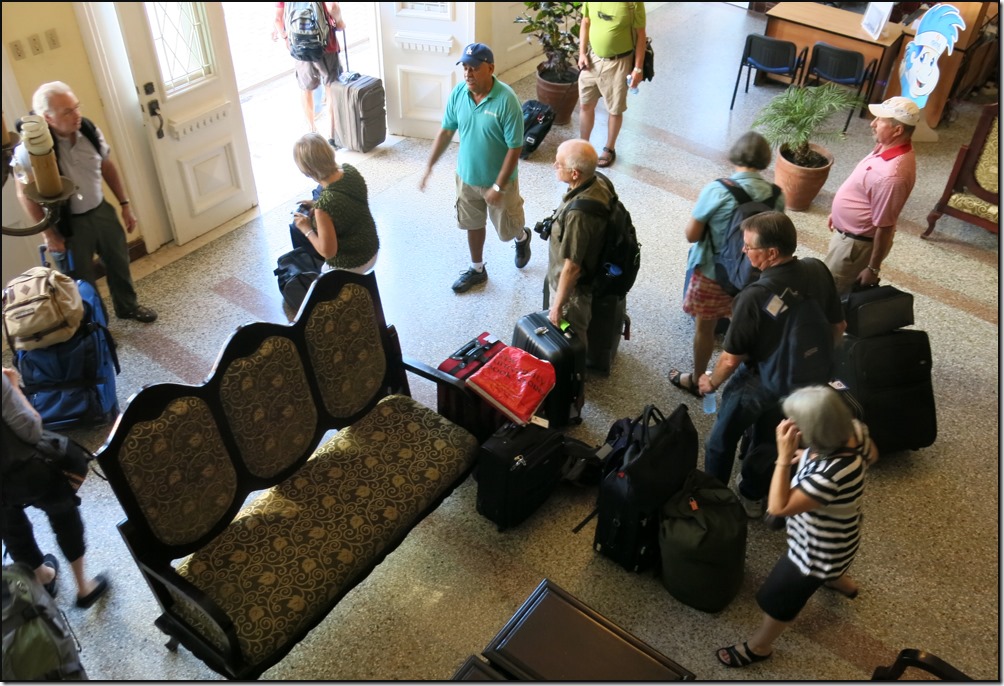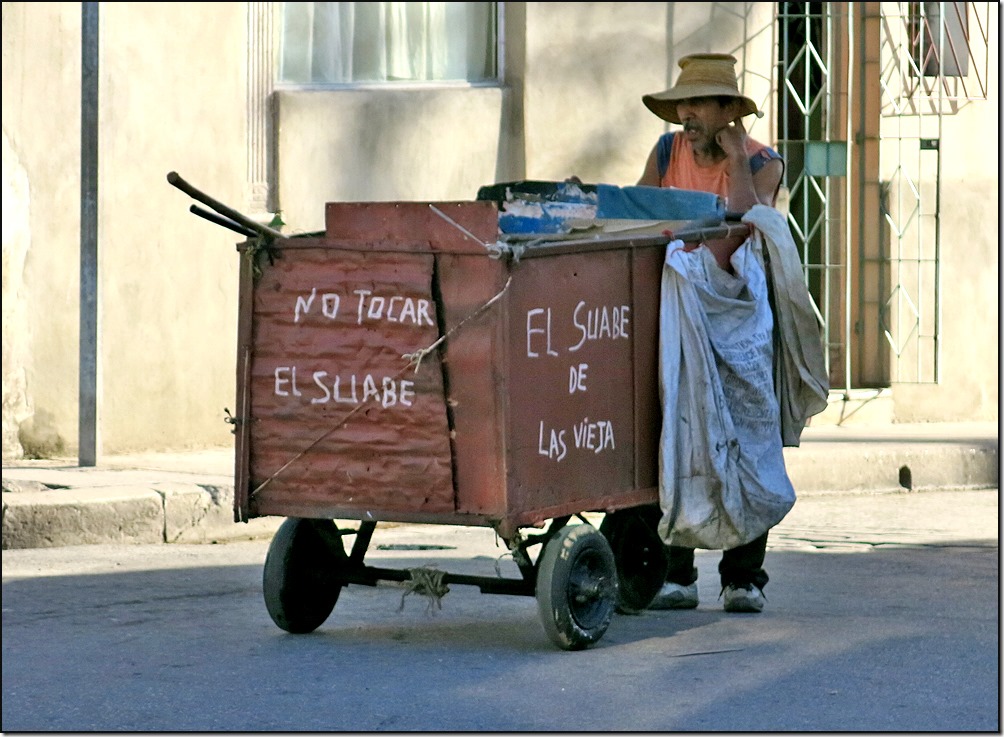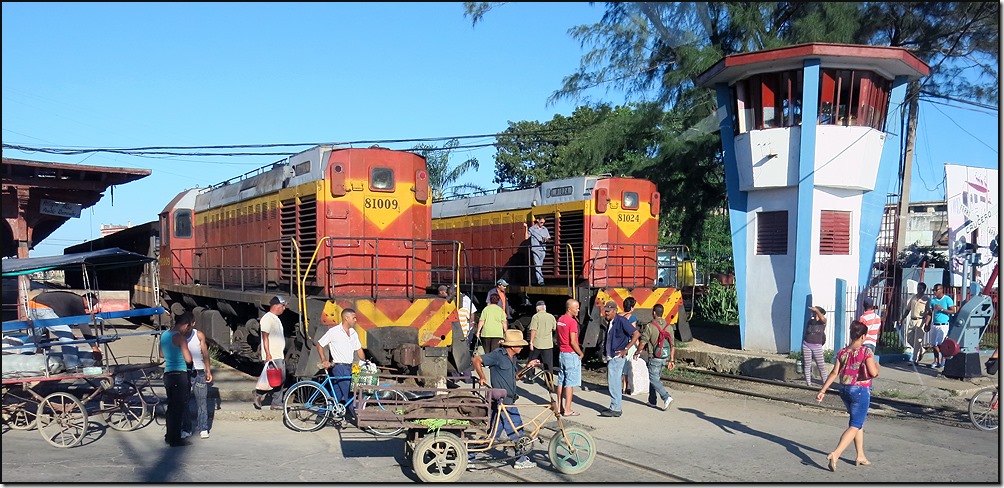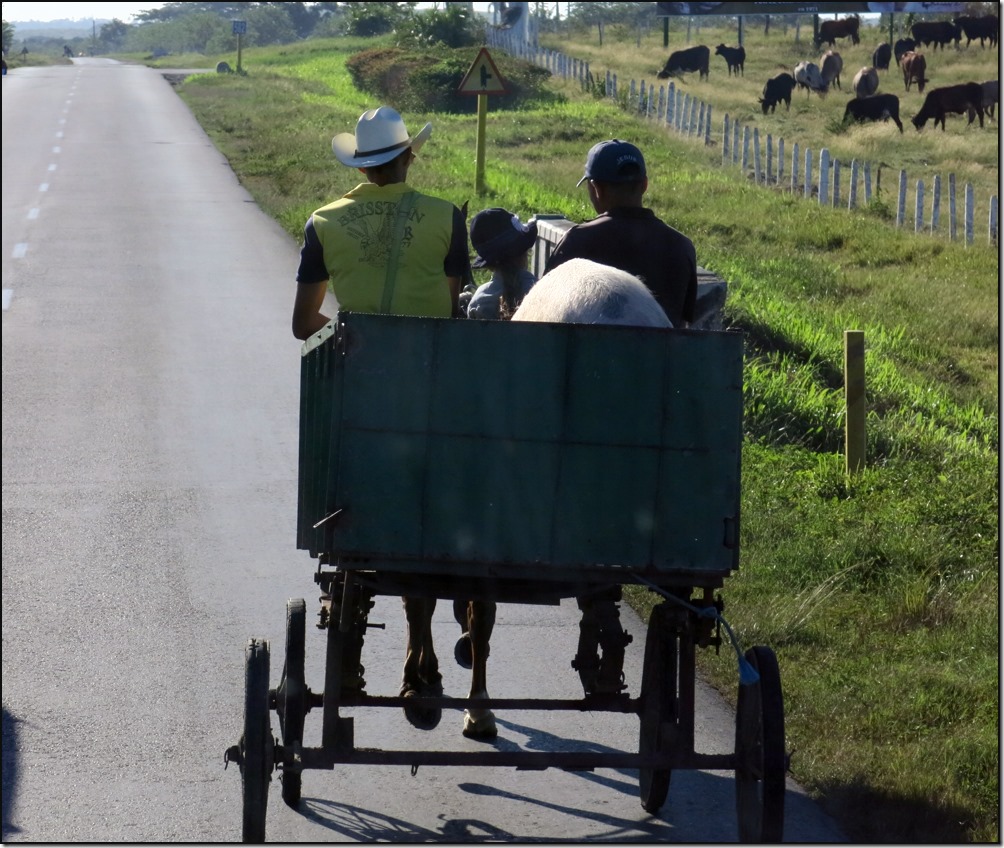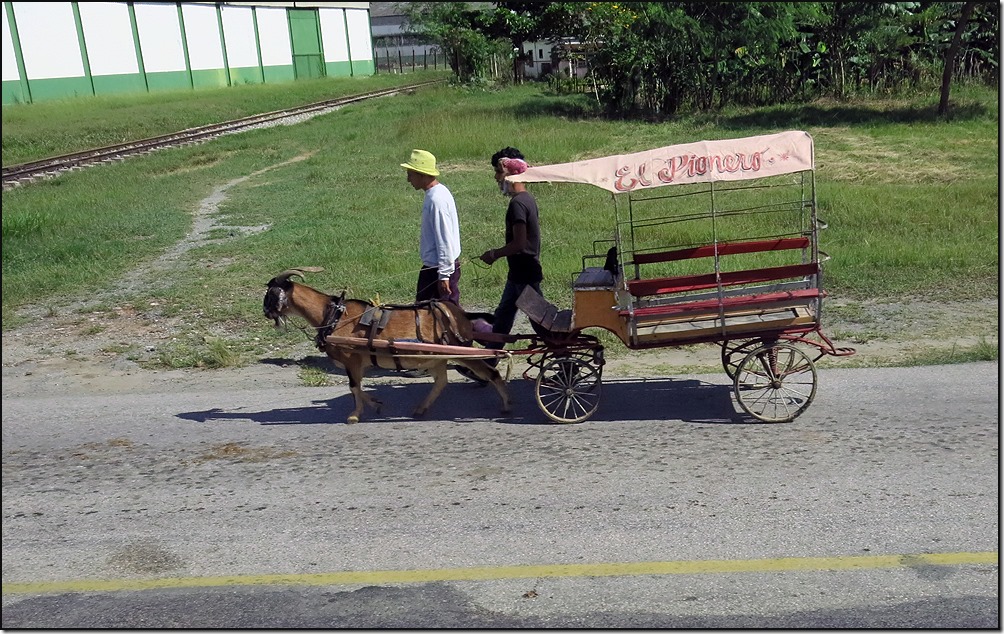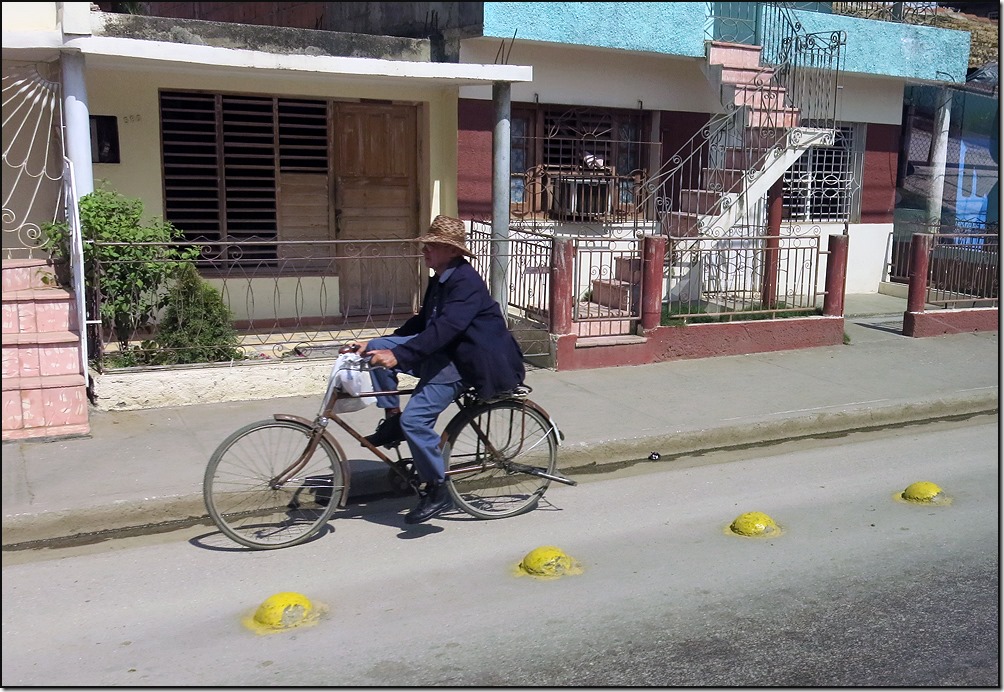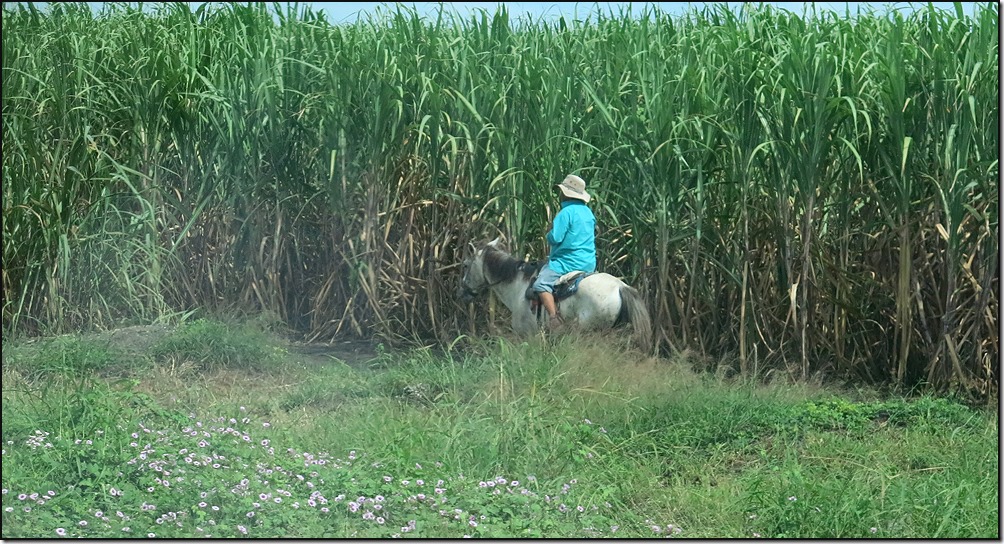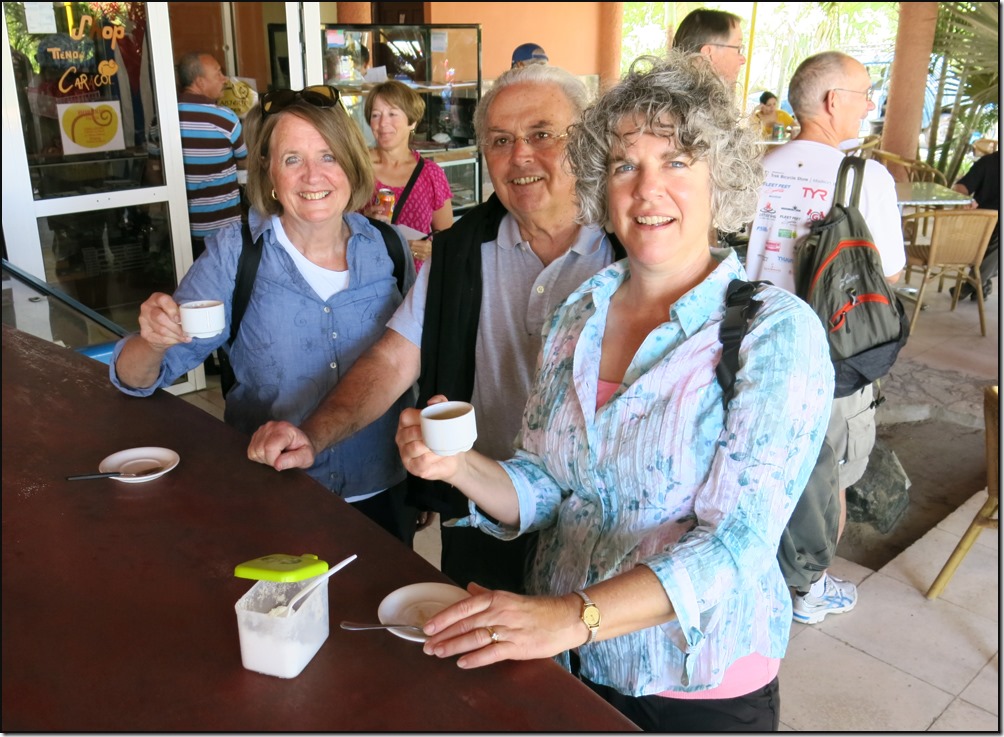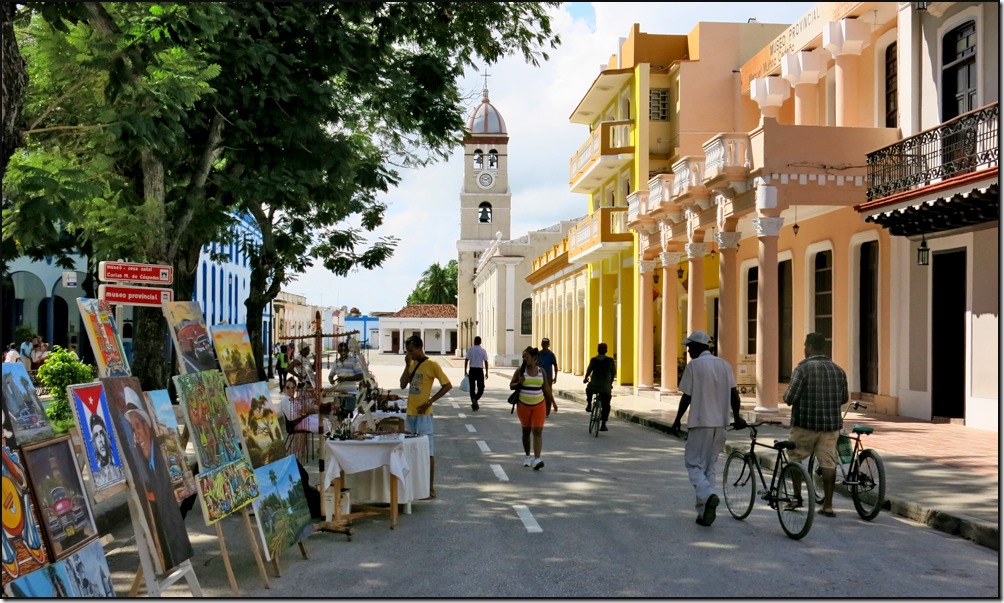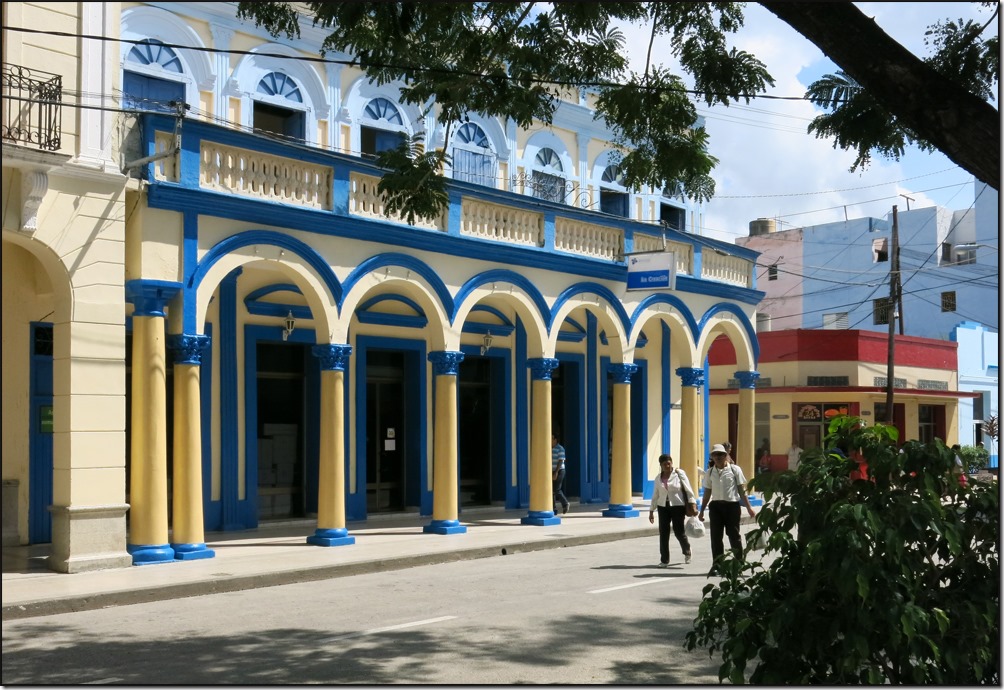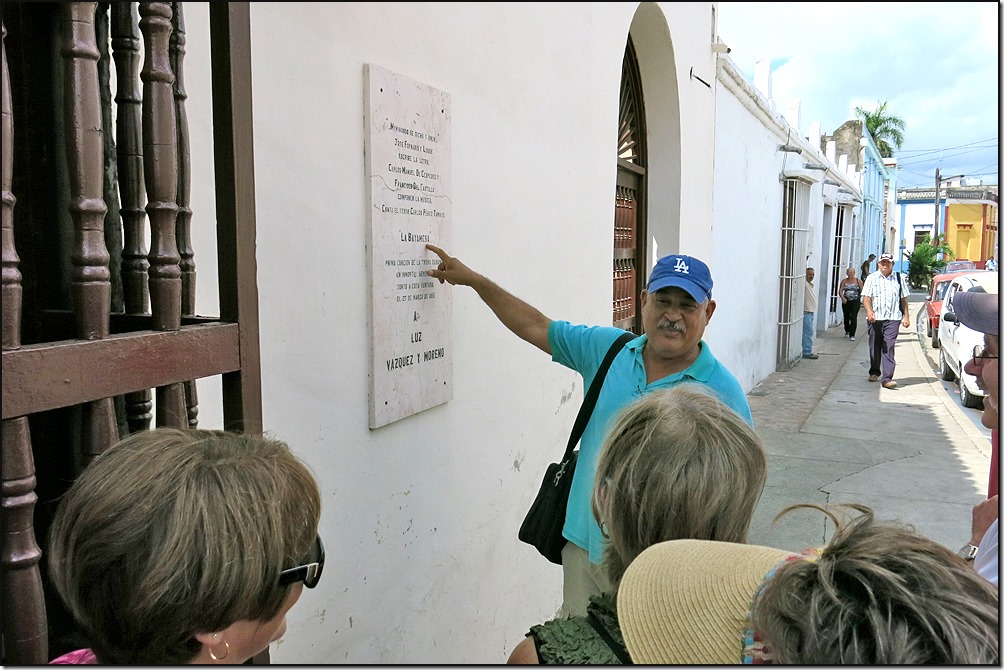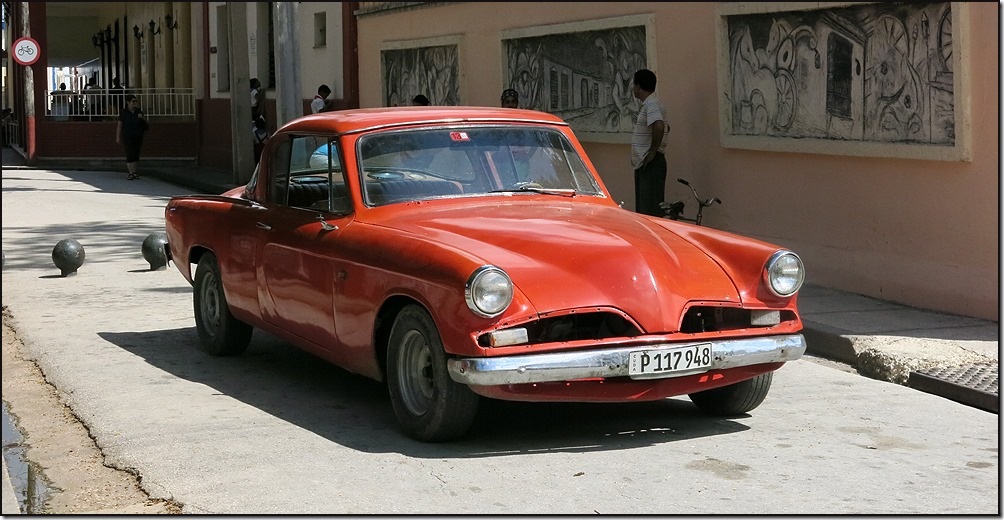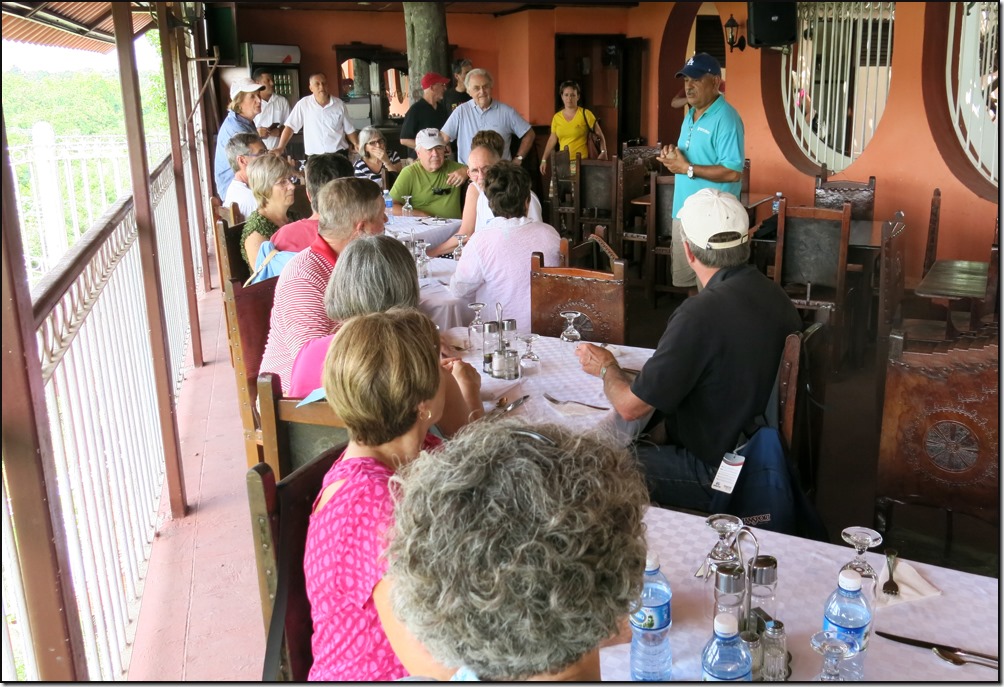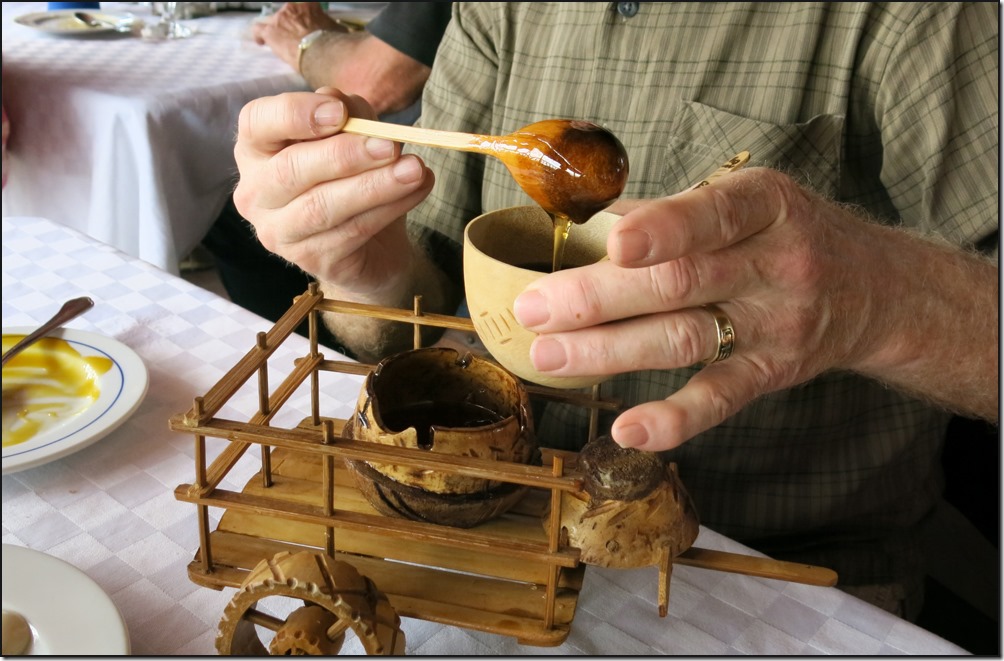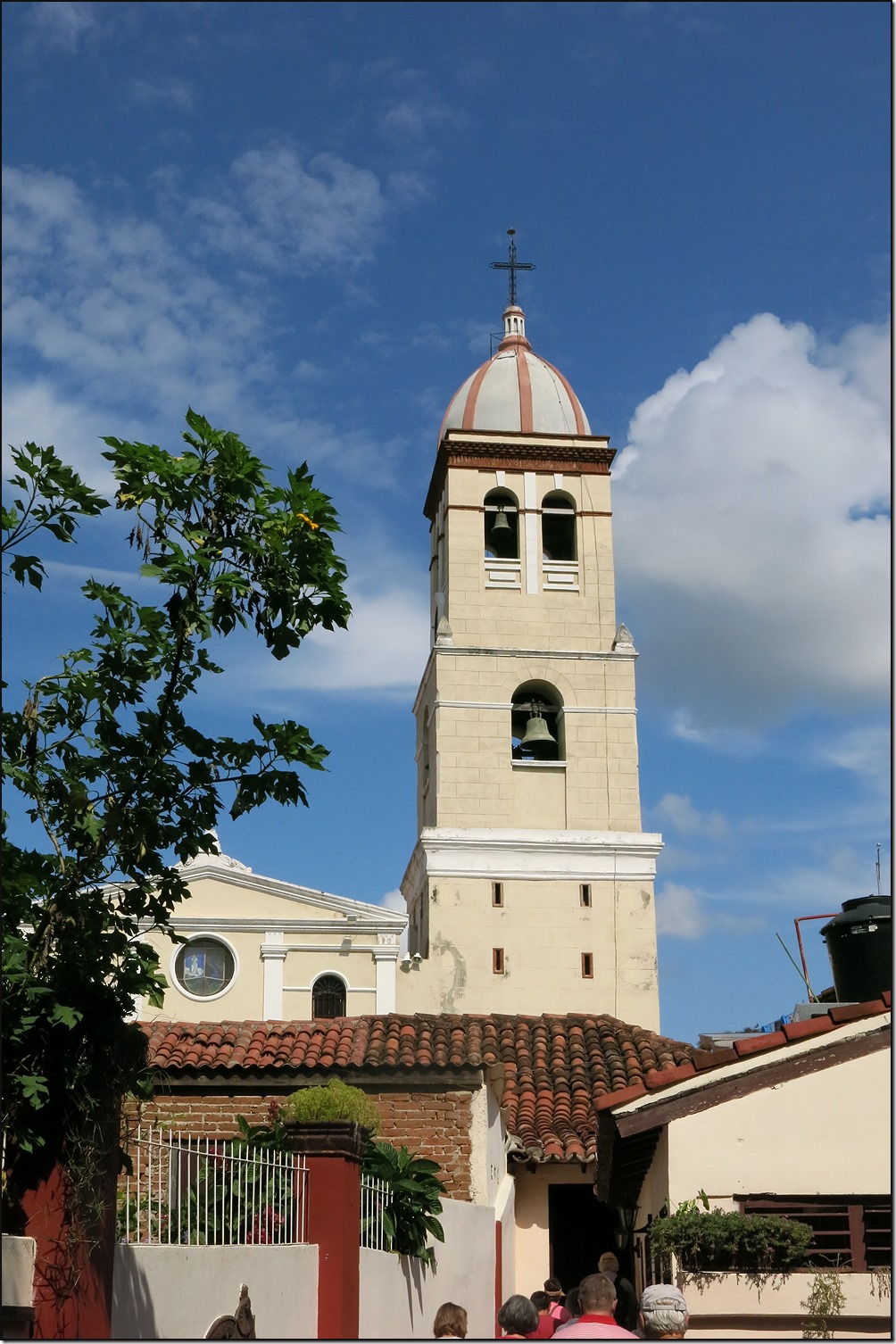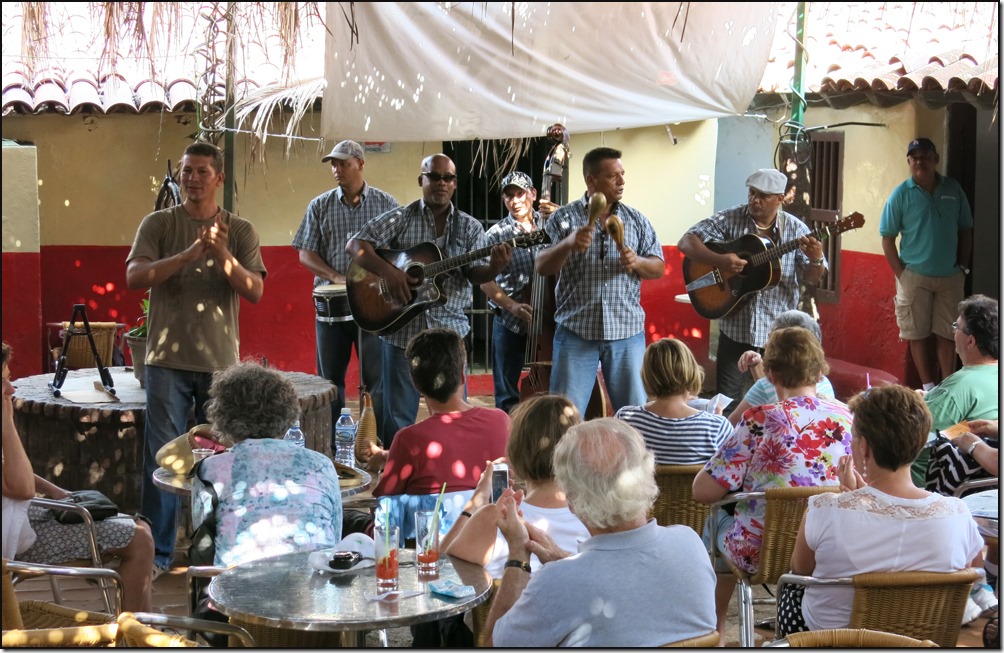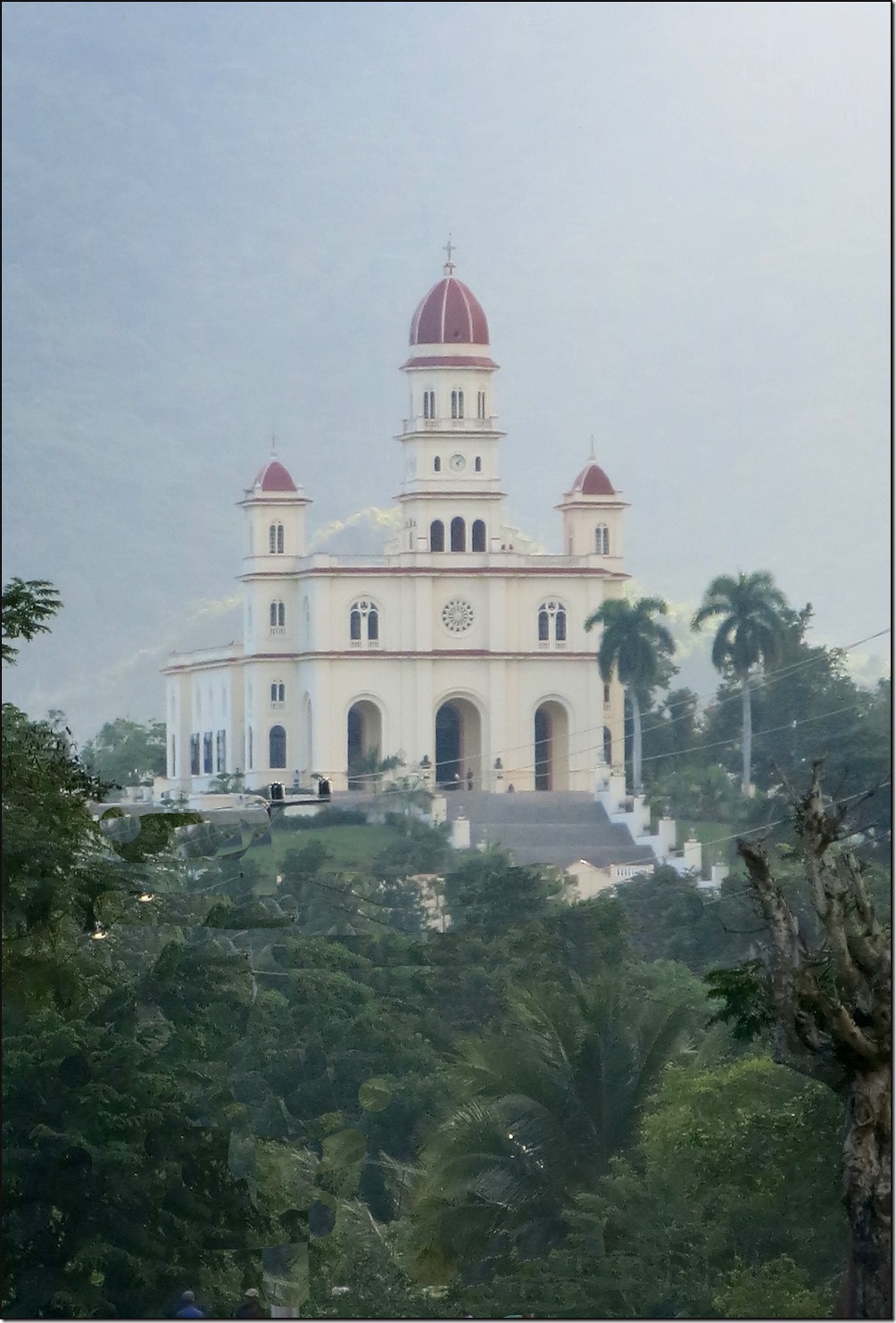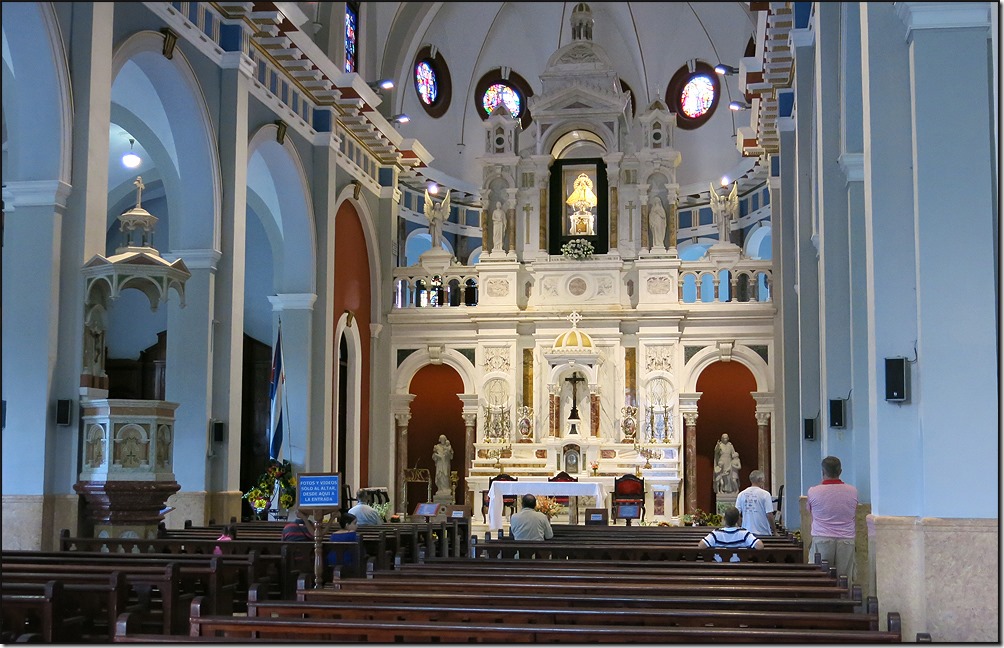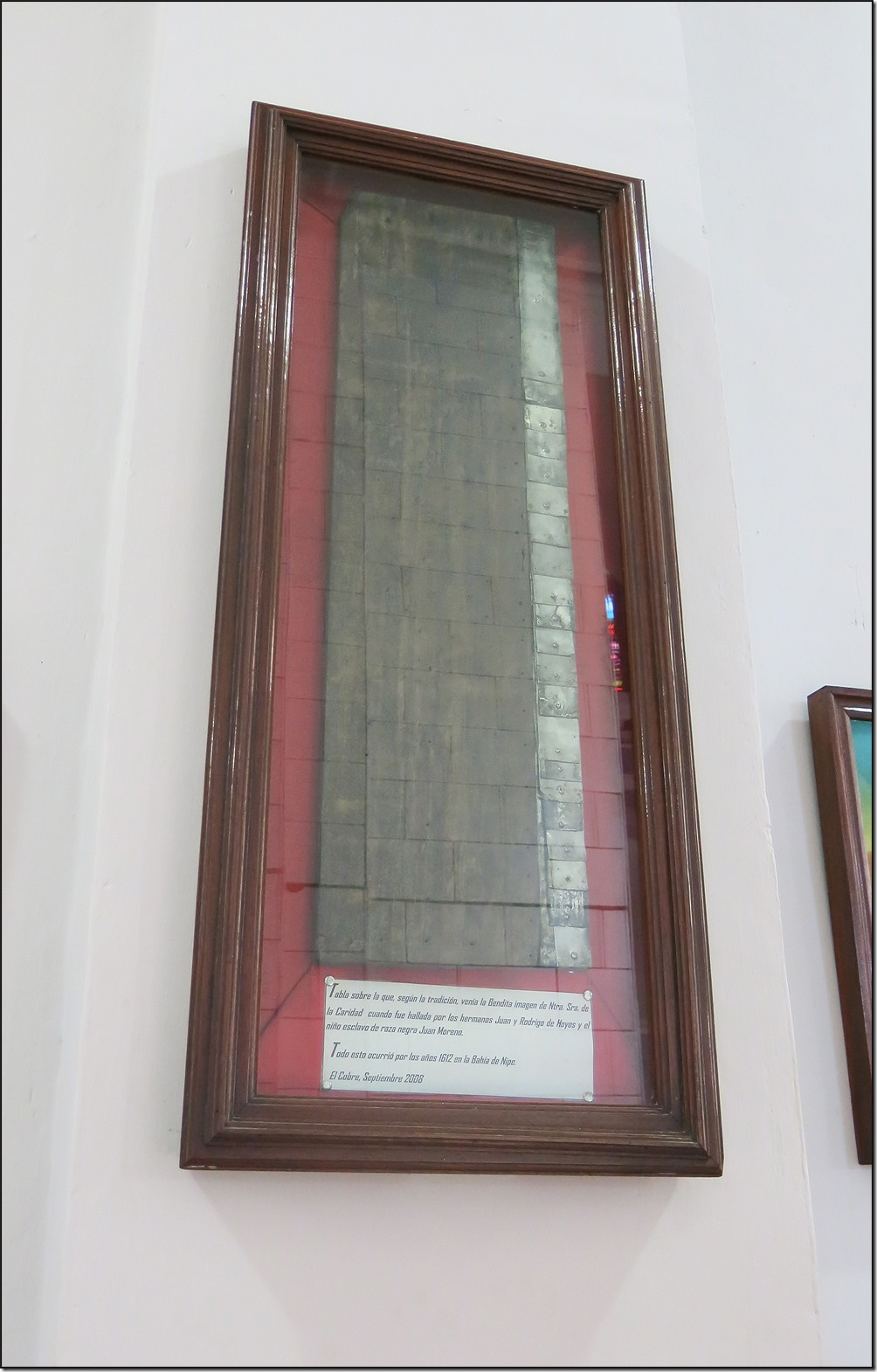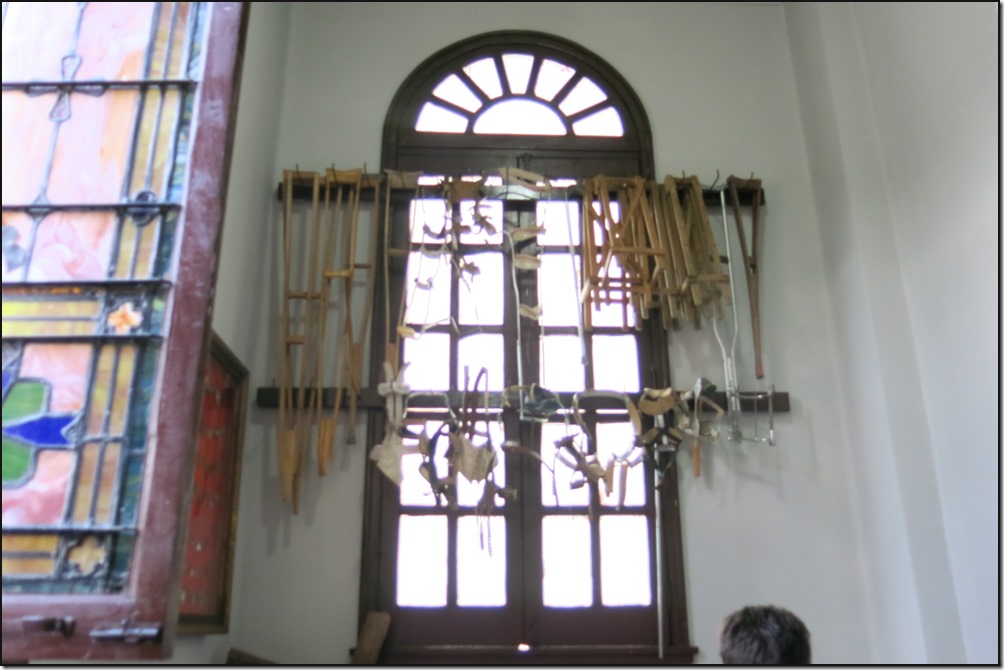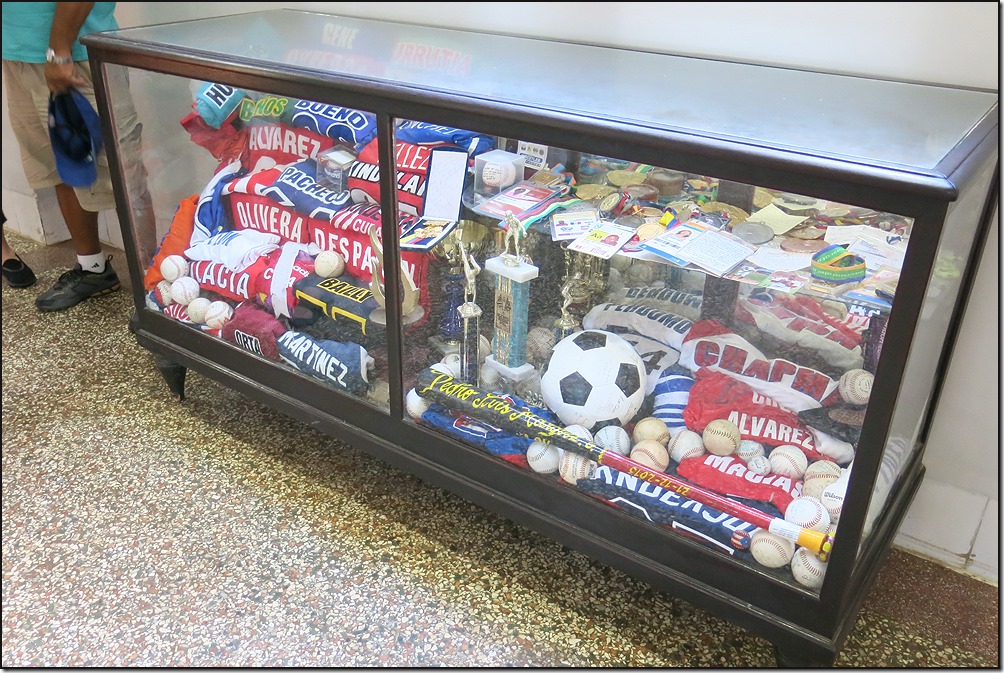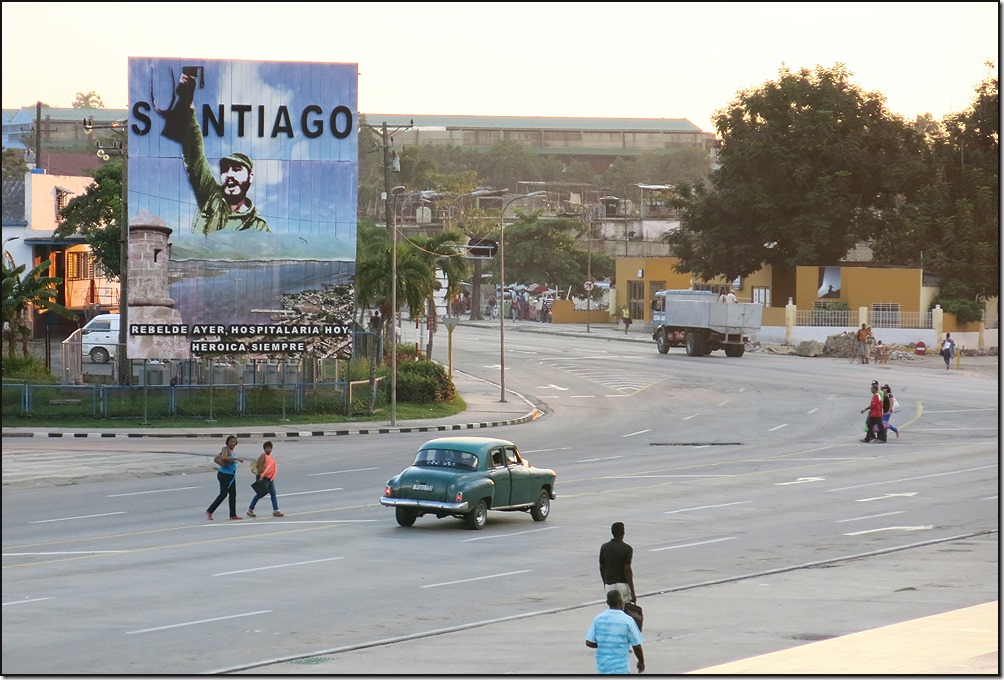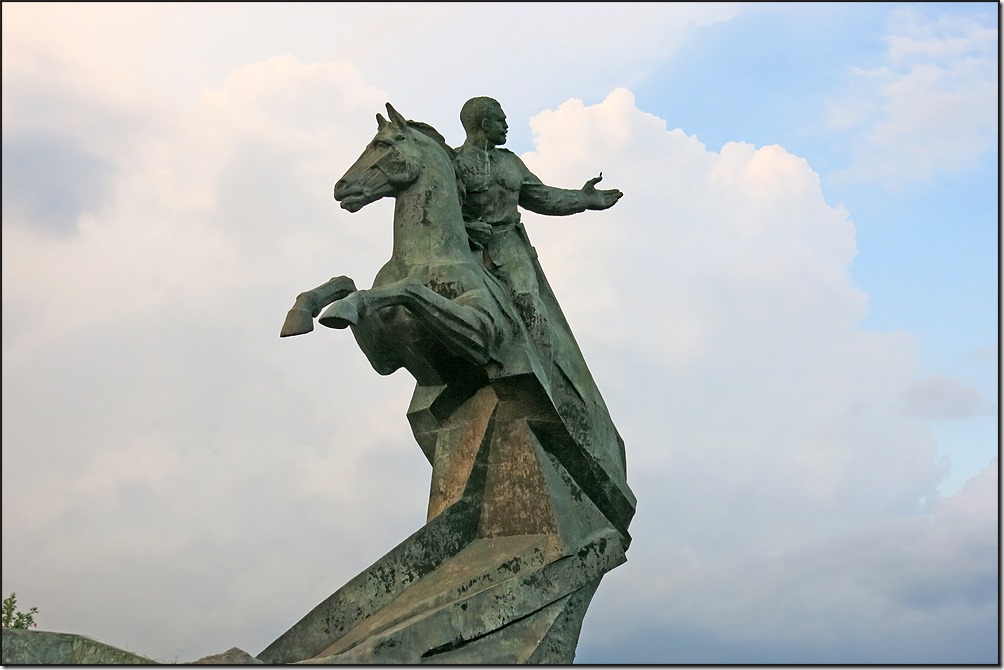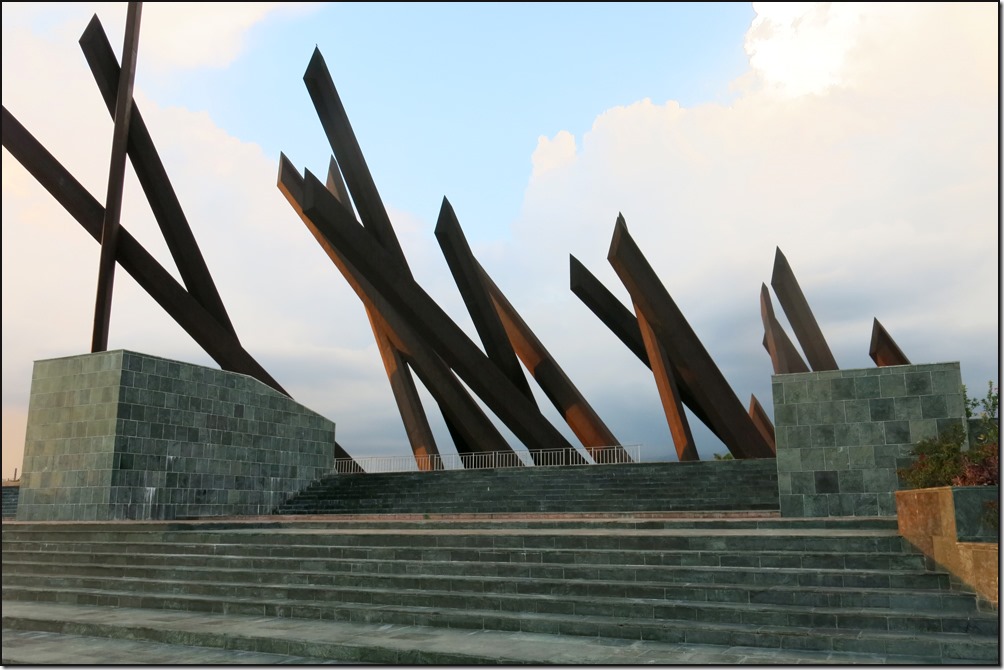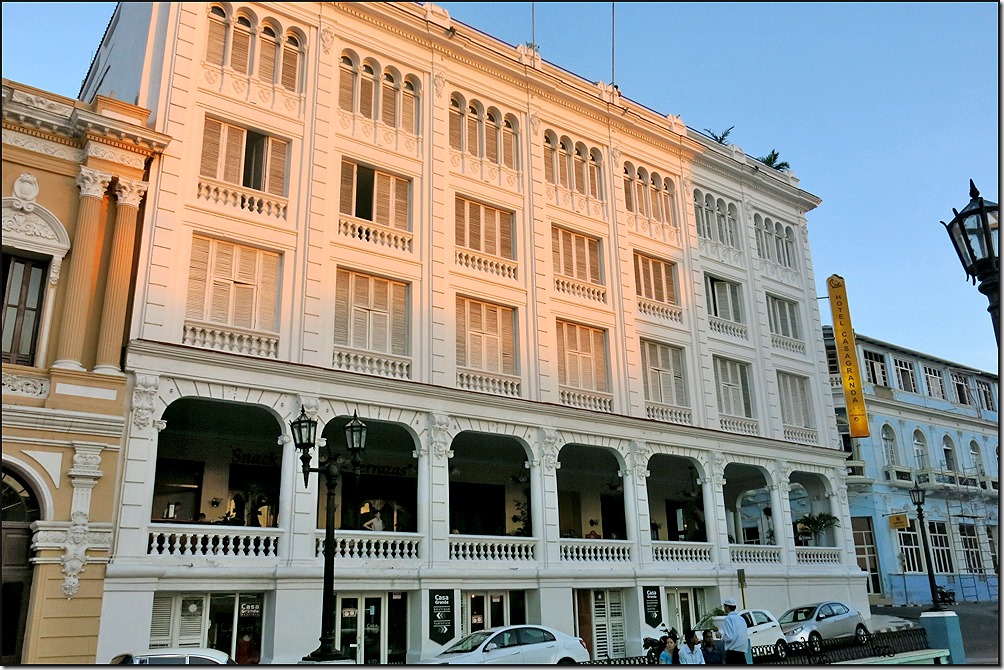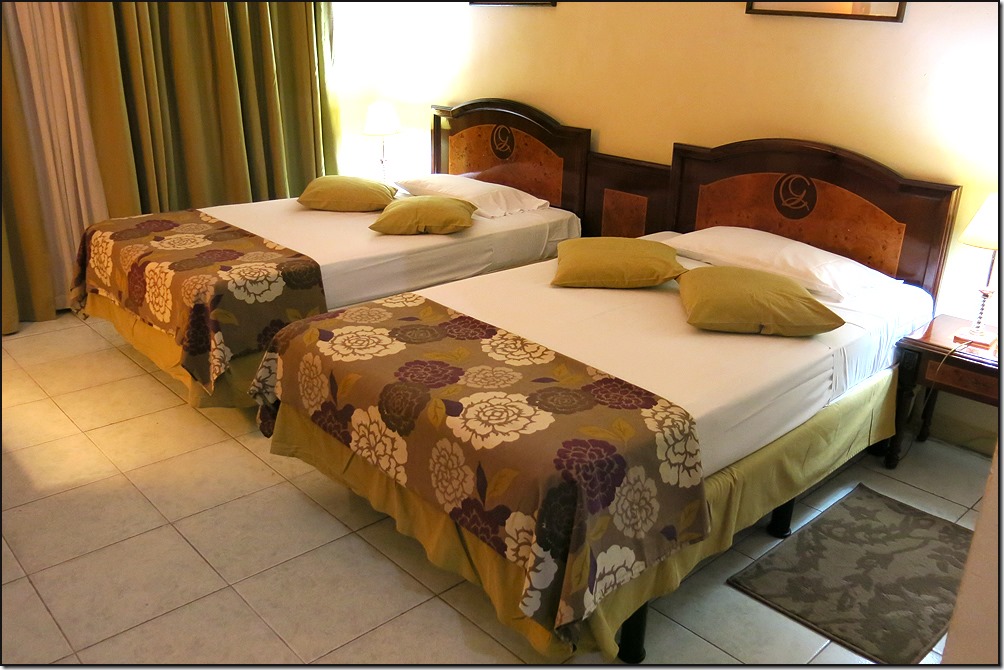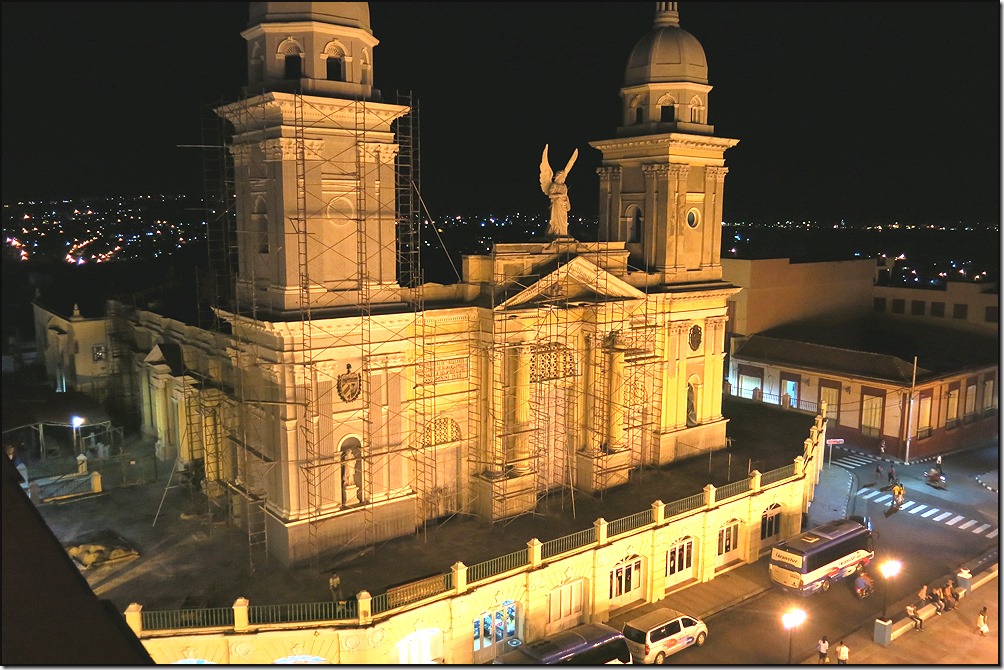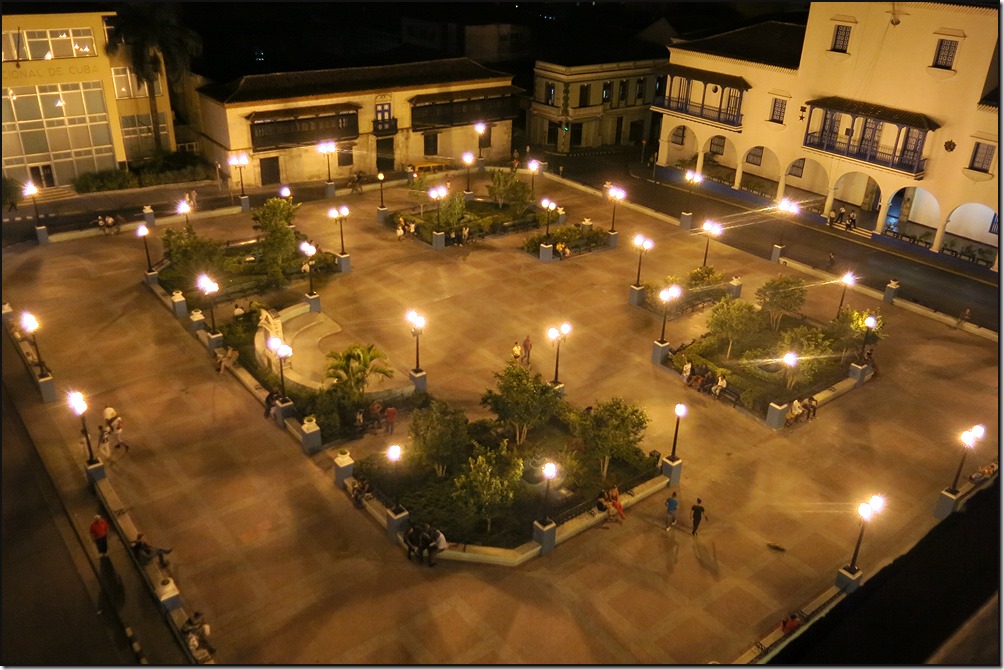Yes . . . air conditioning made all the difference in getting a good nights sleep. Window units, a little loud but with ear plugs securely in place . . . .zzzzzzzzzzzz.
We stayed in government owned hotels during the trip and there was always a continental breakfast included. Really ‘full course’, though, with a wide variety of meats, salads, breads and omelettes made to order!
The courtyard served as our ‘al fresco’ breakfast area . . .
. . . a hearty breakfast provided a days worth of energy for our daily schedule of activities. We were usually on the bus by 8:30am and on the road until usually 6:00pm!
. . . most of the hotels had porters but an independent group like ours usually hauled our own gear. Many times the bus could not get down the streets of the historic districts where most of our hotels were located. Here our guide, Eliseo rounds up the gang to point us in the right direction.
During our stay we say many forms of transportation to move people and commodities around the countryside. The most prevalent was one’s own two feet. We saw people walking EVERYWHERE. The vast majority do not own cars. Gasoline is about $4US/gallon and with the average monthly wage at about $20US, owning a car is a dream no one will ever attain. Many people pushed cars such as the one above with their wares.
There is a train system . . .
. . . but this was the most common form of transportation we saw. Two wheeled, usually rubber tired, carts pulled by horses, donkeys or oxen. This one had a big pig in the back!
. . .some where pulled by goats!!
A very common way of getting around town, and out in the country, was by bicycle. Usually VERY old bicycles. Never saw a TREK!!!
Horses for transportation were also very common.
Today we were busing to Santiago de Cuba with a lunch stop in Bayamo. We stopped about 1.5 hours into the 3 hour ride for a little rest stop and cafe!
Art for sale in Bayamo . . .
. . .and the kids returning to school from an outing. In Cuba, all primary, middle and secondary students wear uniforms to school.
Great use of color in this restored village.
Eliseo points our a historical marker during our walk around town.
First of many, many old US produced cars we would see during our tour of Cuba. A Studebaker, we thought. Most were in average shape with some looking like they just rolled off the show room floor. Some on the other end of the scale looked like they had been painted several times with a brush!
Lunch at the Bodega was very nice, eating on the veranda overlooking a valley with a river. We watched the herons and egrets come and feed as we did too. mmmmmmmmmm . . . I wonder about that homemade mayo.
Greg tries the ‘specialty coffee of the house’ that came with it’s own little trailer and honey pot!
After lunch we walk around town a bit more and head over to the House of Culture where there was a special concert performance for us. There would be music nearly everywhere and around every corner we turned. Most groups had CD’s for sale. Standard price 10 CUC’s.
These guys were REALLY good and soon had our group up on the floor dancing! Of course emJay bought a CD!
Soon we were back on the bus heading to the Basilica del Cobre recently visited by Pope Benedict. It is the largest basilica in Cuba and a special tribute to the Virgin Mary.
The church was in beautiful condition.
The story goes that two fisherman found a plank floating in the ocean with a statue of the Virgin Mary affixed to it. A church was initially construct to house the statue and eventually the Basilica was constructed.
Here is the golden statue of the virgin. In the red box is the a gold rose the pontiff brought during his visit. If one prays to the Virgin her for a request and it is granted, most return to give thanks with a donation or sign of thei gratidtude. After Ernest Hemingway won his Pulitzer prize, he brought the medal and left it at the feet of the Virgin’s statue. Someone recently stole the gold medal. Not knowing it’s significance they eventually returned it.
Crutches and appliances left by believers who have prayed to the Vrgin Mary for help and were healed of their malady.
Many baseball players have come to request help and have returned and left jersey, trophies and other clutter as a way of saying thanks!
Soon we were on the bus and heading to our home for the next two nights, Santiago de Cuba.
But not before a stop at Revolution Square where Antonio Maceo, a national hero who led the final charge against Spain for Cuba’s independence is memorialized. His popularity is national and will never be shadowed by modern leaders like Fidel or Raul.
An art piece depicting the machetes of the revolution.
We finally rive at our hotel for the next two nights, The Hotel CasaGranda located right on the town square.
Nice digs!
Many of the hotels we staed at had roof top gardens and bars. Here we had a good view of the church restoration going on next door . . .
. . .and a great view of the square. The hotels usually have a large buffet at night and the Hotel CasaGranda was no exception. With a full tummy and a few rum at the rooftop bar it was soon time for bed!

